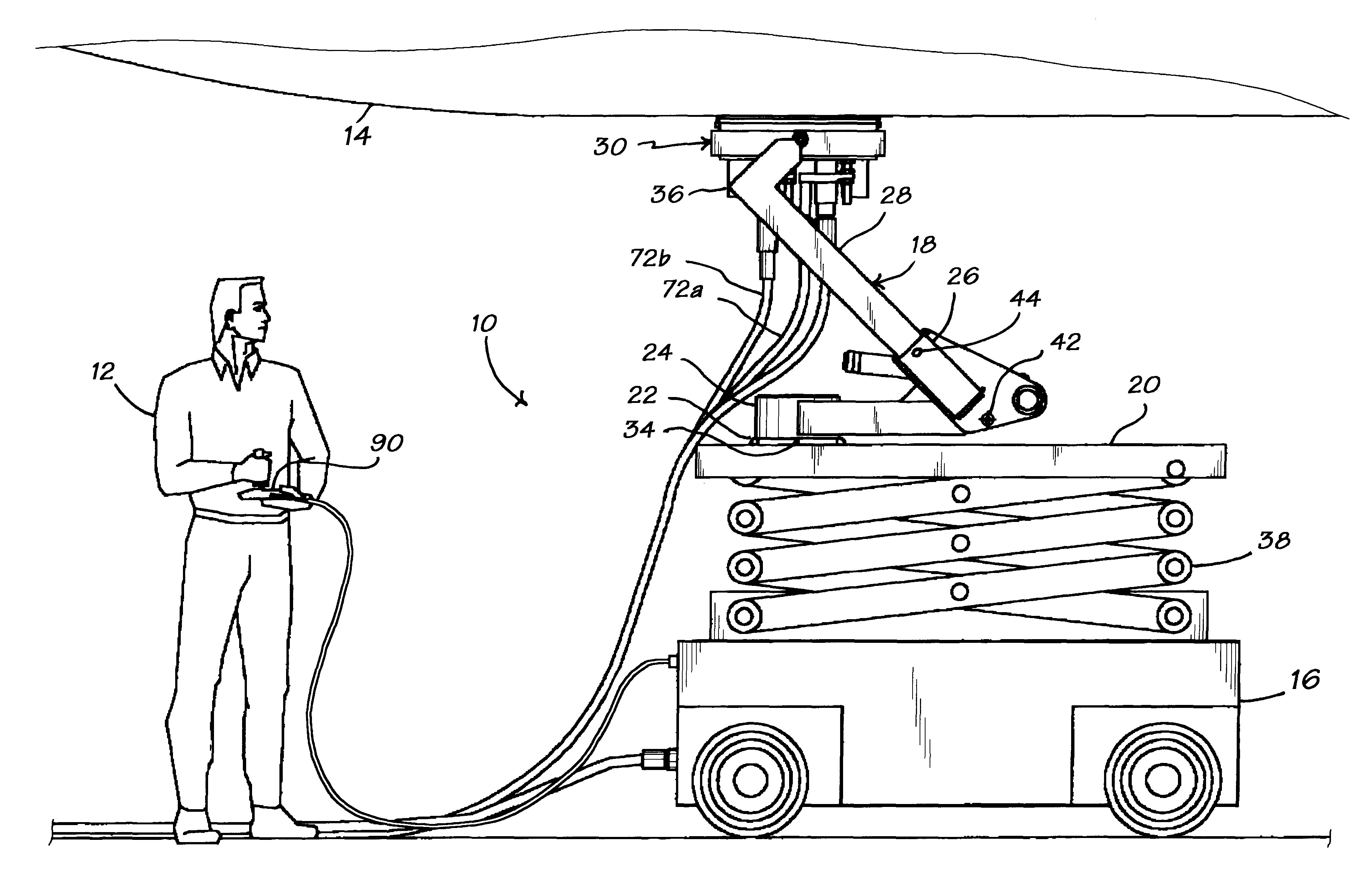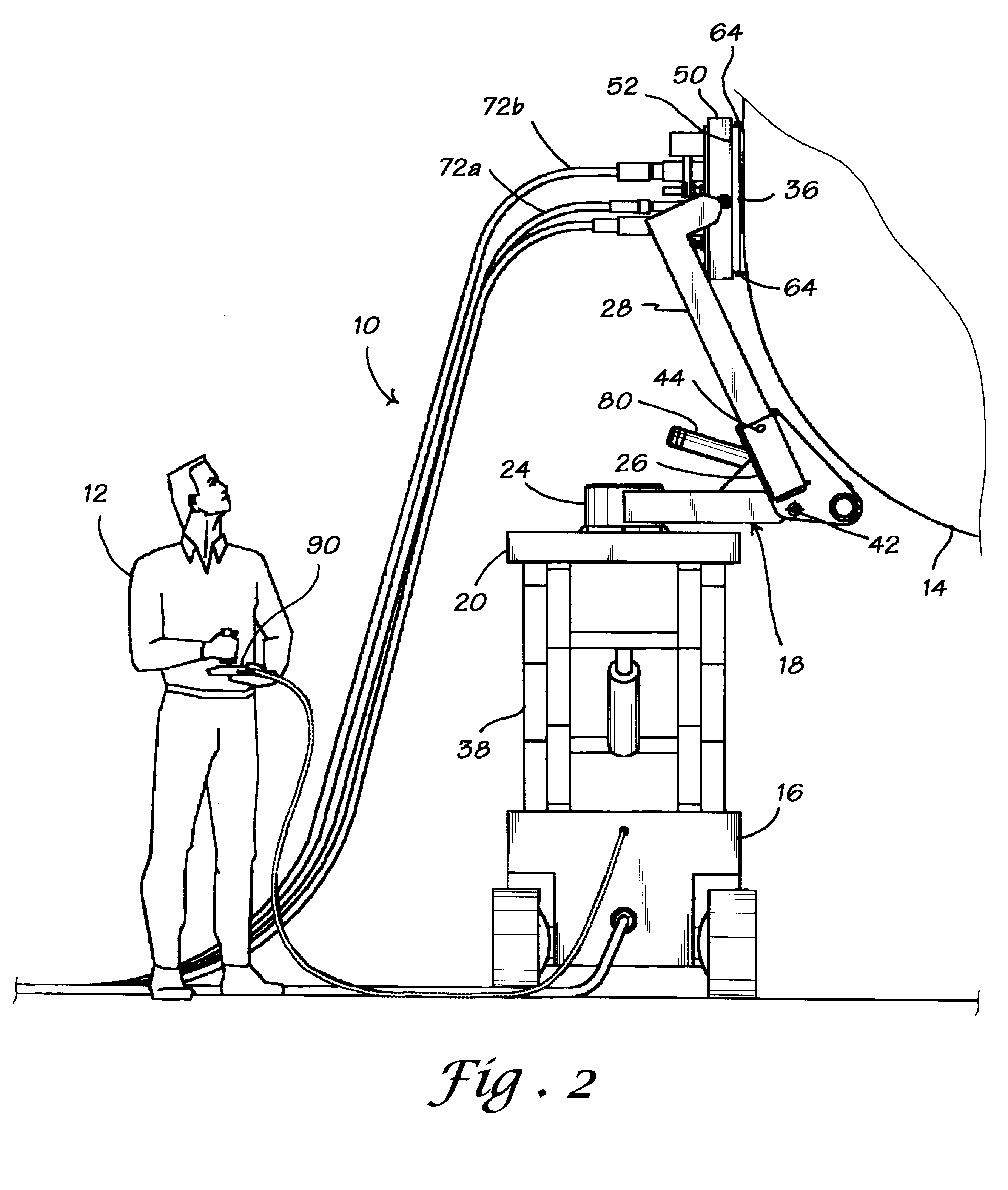Contour-following apparatus for cleaning surfaces
a technology of cleaning apparatus and surface, which is applied in the field of working apparatus, can solve the problems of affecting the performance of the ship, requiring replacement, and deteriorating of the most durable coating, and achieving the effects of improving the service life of the ship, corrosion and metal fatigue, and improving the service li
- Summary
- Abstract
- Description
- Claims
- Application Information
AI Technical Summary
Benefits of technology
Problems solved by technology
Method used
Image
Examples
Embodiment Construction
In the following detailed description, reference numerals are used to identify structural elements, portions of elements, surfaces and areas in the drawings. It should be understood that like reference numerals are intended to identify the same structural elements, portions or surfaces consistently throughout the several drawing figures, as such elements, portions or surfaces may be further described or explained by the entire written specification. As used in the following description, the terms "horizontal," "vertical," "left," right," "up," "down," as well as adjectival and adverbial derivatives thereof (e.g., "horizontally," "rightwardly," "upwardly," etc.) refer to the relative orientation of the illustrated structure as the particular drawing figure faces the reader. Similarly, the terms "inwardly" and "outwardly" refer to the orientation of a surface of revolution relative to its axis.
Referring now to FIGS. 1 and 2, there is shown a modular, contour-following apparatus 10 acc...
PUM
 Login to View More
Login to View More Abstract
Description
Claims
Application Information
 Login to View More
Login to View More - R&D
- Intellectual Property
- Life Sciences
- Materials
- Tech Scout
- Unparalleled Data Quality
- Higher Quality Content
- 60% Fewer Hallucinations
Browse by: Latest US Patents, China's latest patents, Technical Efficacy Thesaurus, Application Domain, Technology Topic, Popular Technical Reports.
© 2025 PatSnap. All rights reserved.Legal|Privacy policy|Modern Slavery Act Transparency Statement|Sitemap|About US| Contact US: help@patsnap.com



